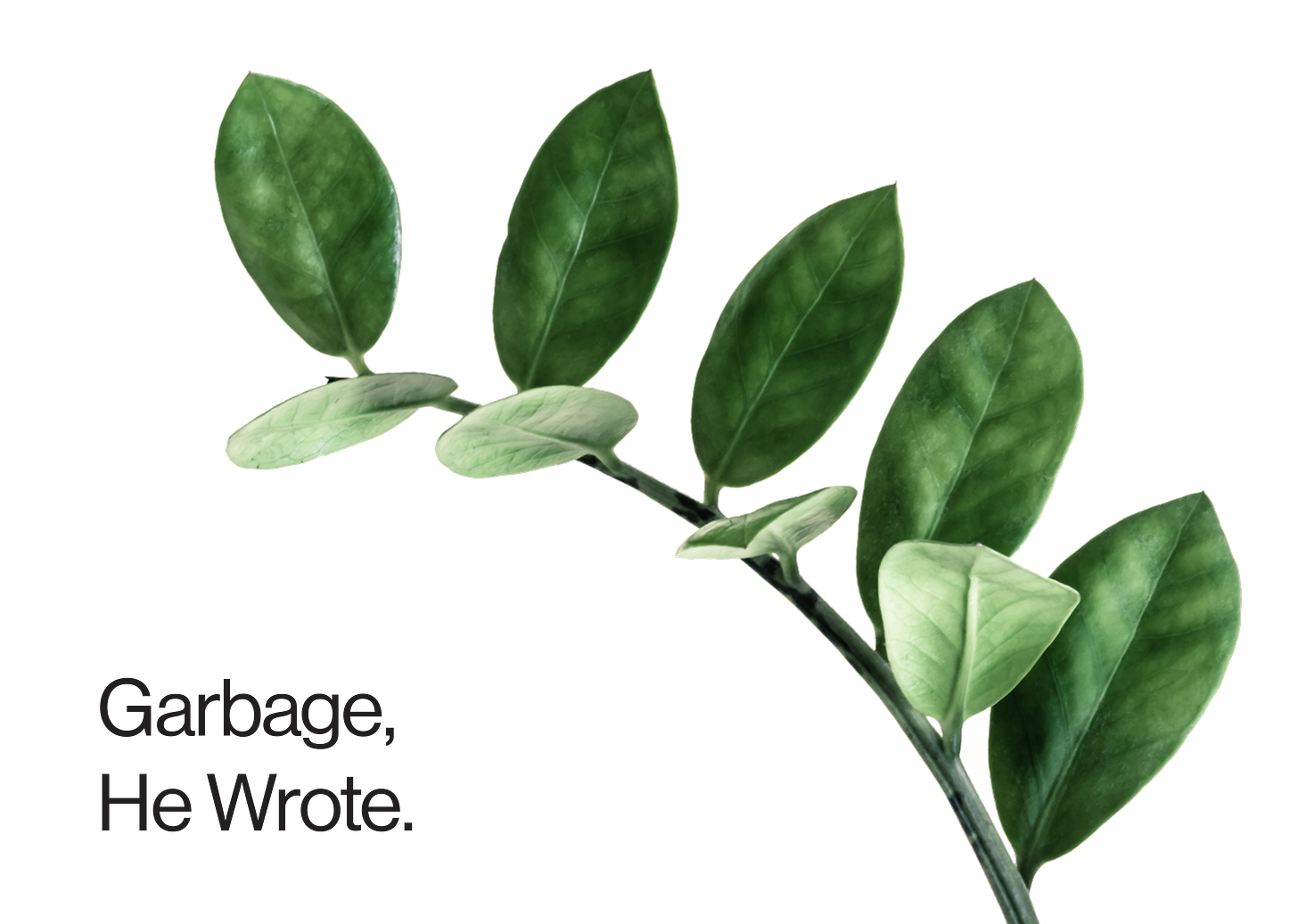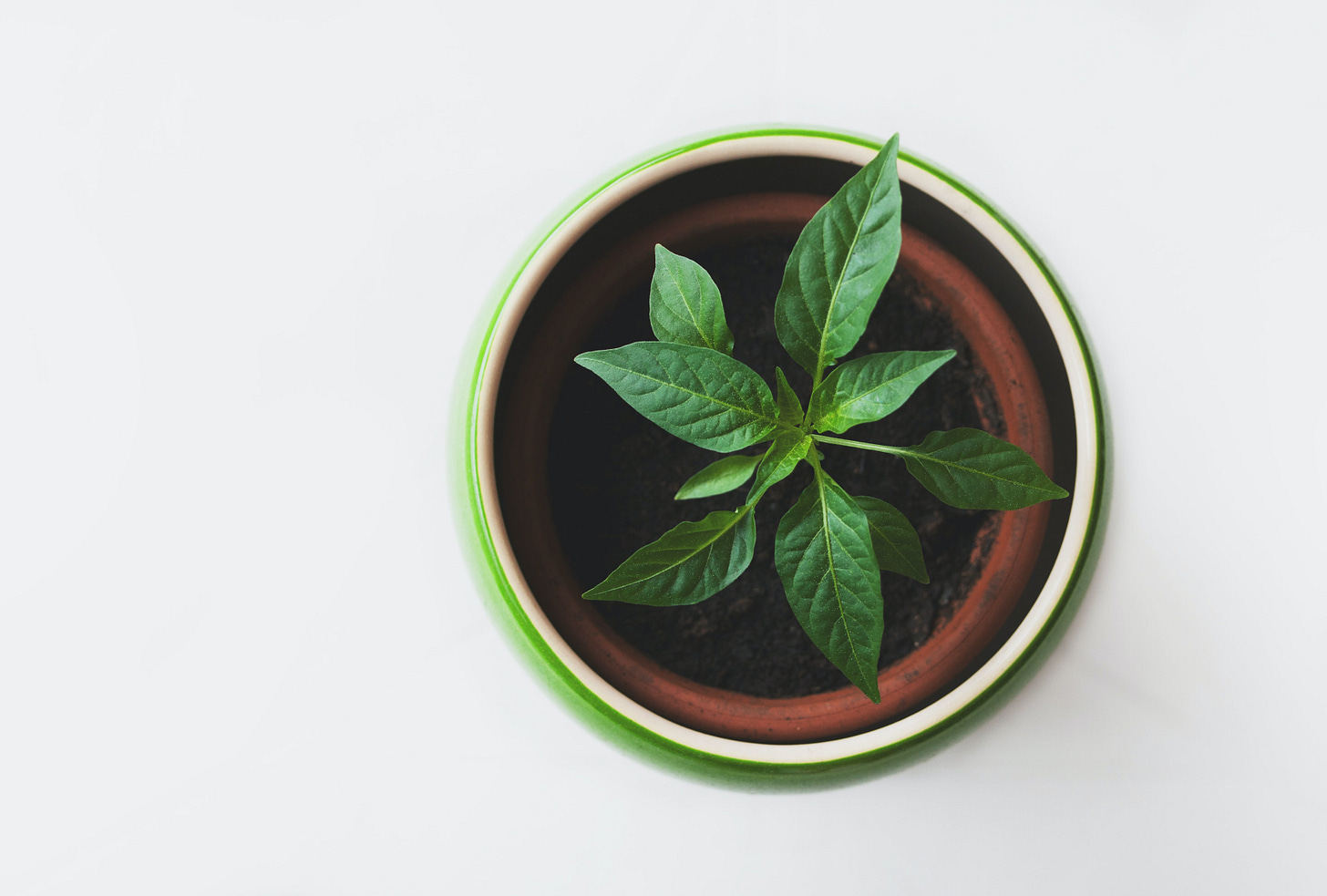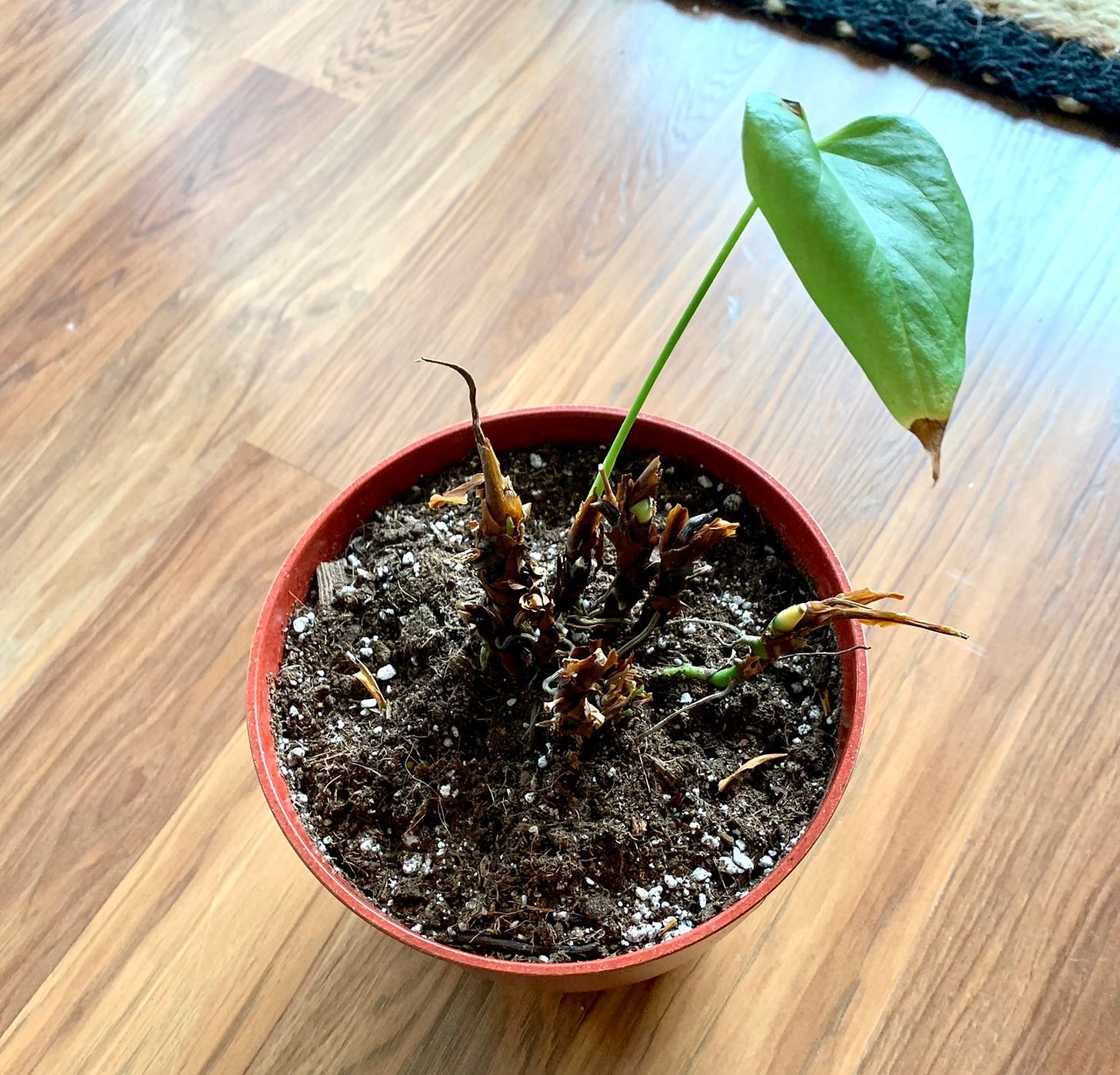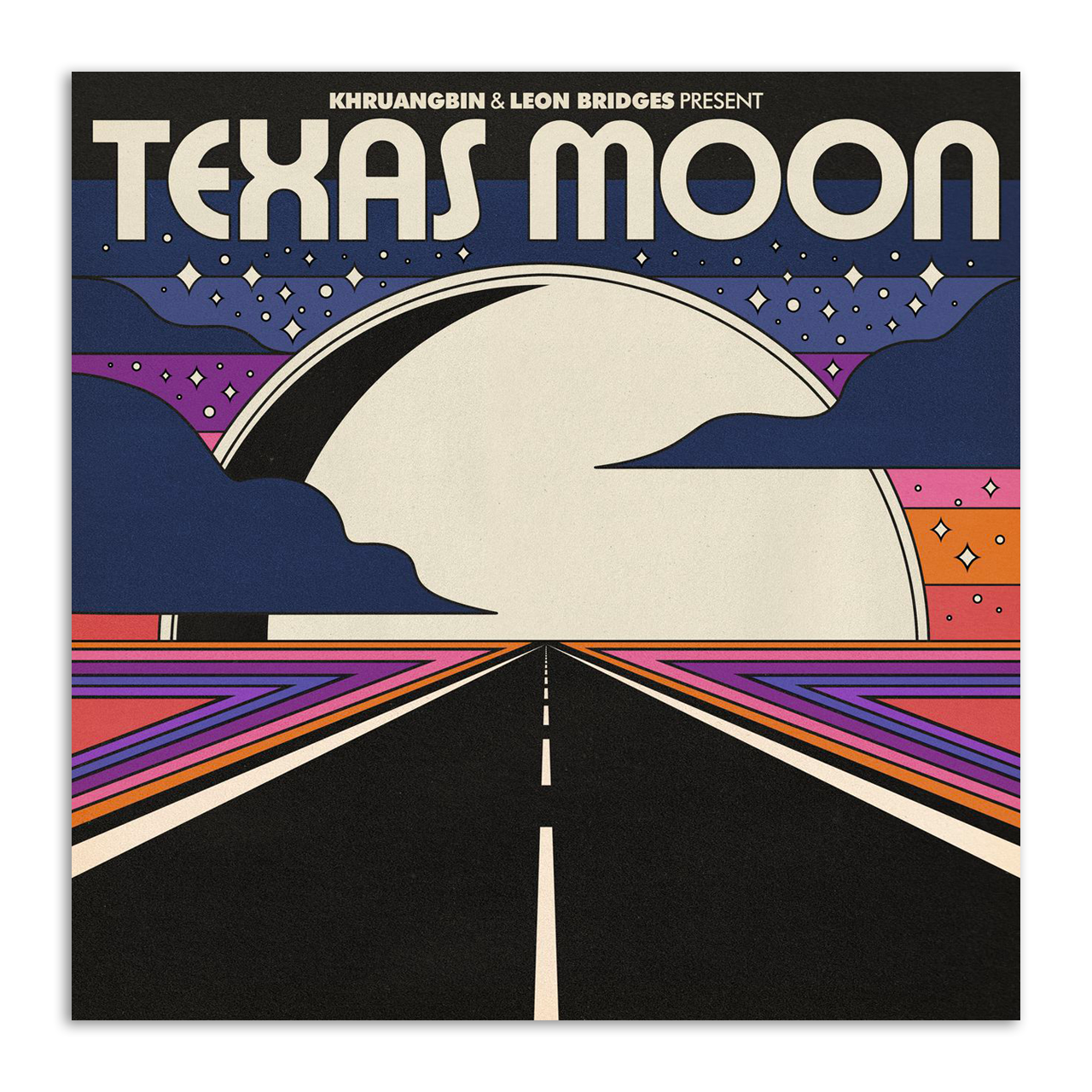Hi there! Welcome to an educational edition of Garbage, He Wrote. Today we’re talking about houseplants.
I’ve been a proud houseplant owner for close to two years. I’m here to tell you everything I’ve learned about houseplants in that time, which isn’t much, because I’m really bad at this. To clarify: this guide is by a beginner. If you’re seeking guidance from someone more qualified, I’d recommend searching literally anywhere else on the internet.
Let’s get started!
Choosing your plant
The first step in caring for a houseplant is — you guessed it — picking one! Greenhouses carry hundreds of different plant species, each suited for different environments and caretakers. Initially, the selection may overwhelm you, but engaging all your senses while browsing may make it easier to find the perfect one. Take your time with the plants. Study them. Sniff them. Lick them. Put your ear to their roots and listen for deep ancestral knowledge. If you lift a plant and notice the vibes are off, don’t take it personally. Each plant just knows what it wants.
At first, I preferred to shop for plants at dignified establishments like greenhouses and garden centers. Then, following the unexpected deaths of a pink nerve plant and multiple crotons, I could no longer bear the financial and emotional burden and began to frequent unglamorous, hole-in-the-wall joints like Home Depot and Lowe’s. After killing most of those plants, I then limited myself to plants that required little to no care at all, such as snake plants and succulents. And then I killed some of those too. I’m having a bad time.
Luckily, you don’t have to be like me. Every greenhouse provides a helpful service that can match you with the perfect plant: employees! You can find them scribbling in leatherbound journals at the register or performing dark magic in the “nursery.” If you approach them kindly and say “Hey there, I have no idea what the fuck I’m doing,” they’ll be happy to evaluate your intelligence and pair you with a leafy friend that won’t expire within the week.
Potting your plant
You wouldn’t buy a fish without a tank, would you? Of course not! You’re at a greenhouse, not the county fair (though the humidity makes it difficult to discern). Much like a pet, a plant is an investment, and you’re responsible for providing it with a safe, comfortable home. This means purchasing a pot, drainage dish, garden trowel, grow light, potting soil, fertilizer, and, for those tropical chums, a mister.
What’s that, you ask? Why does it cost so much to keep something alive? My friend, if you’re trying to satisfy that deep-rooted urge to nurture something other than yourself, to witness something flourish under your care, to need something to need you, a plant and its necessities are cheaper than Huggies.
Anyway — back to potting. Always ask a greenhouse employee to pot your plant. They will do a better job than you.
Providing proper conditions for your plant
When you arrive home, Google the name of your plant. Dozens of sites should provide contradictory information on your plant’s water and light preferences, as well as varying timeframes on fertilization, pruning, and repotting (that’s right — you’ll have to do it again next year.) Pick the one with the coolest name, like “The Spruce” or “Dave’s Badass Garden” or “BACKYARD BEAST” and trust it wholeheartedly.
Log each plant’s info in a notebook you often misplace or on an iPhone note you’ll accidentally delete while looking for your online banking login. Remember when I said each plant knows what it wants? You, its caretaker, never will. But try your best to learn!
Watering your plant
Being “loved to death” sounds wonderful if you’re like me, an affection-hungry creature that will wither and die the moment I feel that others are burdened by my presence. However, the survival of a houseplant depends on moderation.
Once your plant is nestled in a friendly environment, let it adjust for two days. DO NOT WATER THE PLANT even if its top layer of soil is crustier than your little cousin’s pink eye. You may anger or shock the plant, and it may retaliate by dying or hurling insults about your career. After that, just do whatever BACKYARD BEAST says.
It’s easy to tell if you’re watering your plant improperly. If you’re underwatering your plant, its leaves will go limp and turn either yellow or brown. If you’re overwatering your plant, its leaves will go limp and turn either yellow or brown. Pretty straightforward.
Lastly, don’t give your plant water directly from the tap. Most public water sources and pipes are contaminated with harmful chemicals, which, over time, will make your plant diseased and sad-looking (a thing that most definitely doesn’t happen to humans). Use filtered water if you can, or fill up a jug and let it sit out for a day to bring the water to room temperature and let some of those nasty substances evaporate into the air you breathe.
Fertilizing your plant
Again, consult your trusted source. Every time I fertilize a plant, I accelerate the rate at which it dies.
Dusting your plant
Plants feed themselves through a process called photosynthesis, in which they use their leaves to trap light from the sun to transform into nutrients. If the leaves of your plant are dusty, they’ll have a harder time receiving light and take longer to grow. Here are a few ways to dust your plants without hurting them:
If your plant dies
As someone who’s already murdered a garden’s worth of plants, this is the one point on which you should trust me.
It’s healthy to prepare for the worst. Your plant is bound to die at some point, whether it’s your fault or not. Some people keep “plant graveyards” with the hope that their lost plants will someday miraculously rise from the dead. This is like having a permanent open casket funeral inside your home, except inside is physical evidence of your failures and shortcomings as a person.
To put it kindly: throw the fucking thing away. No funeral, no prayer service. Just remove the dry heap from its pot, thank it for its time, and drop it in the trash can. It’s okay to feel sorrow or guilt or anger, but stewing in denial will do you no good. The best thing you can do is acknowledge those feelings and use them to better the lives of your other plants going forward. For without death, life has no meaning.
Final thoughts
Even if you don’t buy anything, visiting a plant store is an effective form of self-care.
You’ll have to make a choice between your plants and your cats. You cannot have both.
Take pictures of your plants and post them to the internet, so they know you care about them.
Don’t be a bitch. Buy local when you can.
This concludes everything I know about plants. Best of luck 🤝
Things to Consume
Something to read
The Hidden Life of Trees by Peter Wohlleben
Claiming that trees are the coolest type of plant is an extremely hot take. It is also a correct one.
Like us, trees thrive as a species because of their ability to communicate. They share resources, they warn each other of incoming threats, they seek comfortable environments, and they plan for the long-term. The “hidden life” they live is a social one, and Wohlleben gives readers an approachable introduction to the fascinating things that happen inside of it.
Something to listen to
Texas Moon by Khruangbin & Leon Bridges
The companion to Texas Sun, this five-song EP makes me want to find a remote field, lay on the roof of my car, and smoke an entire pack of cigarillos under a starry sky.
Someone to follow
A taker of satisfying photographs.

















